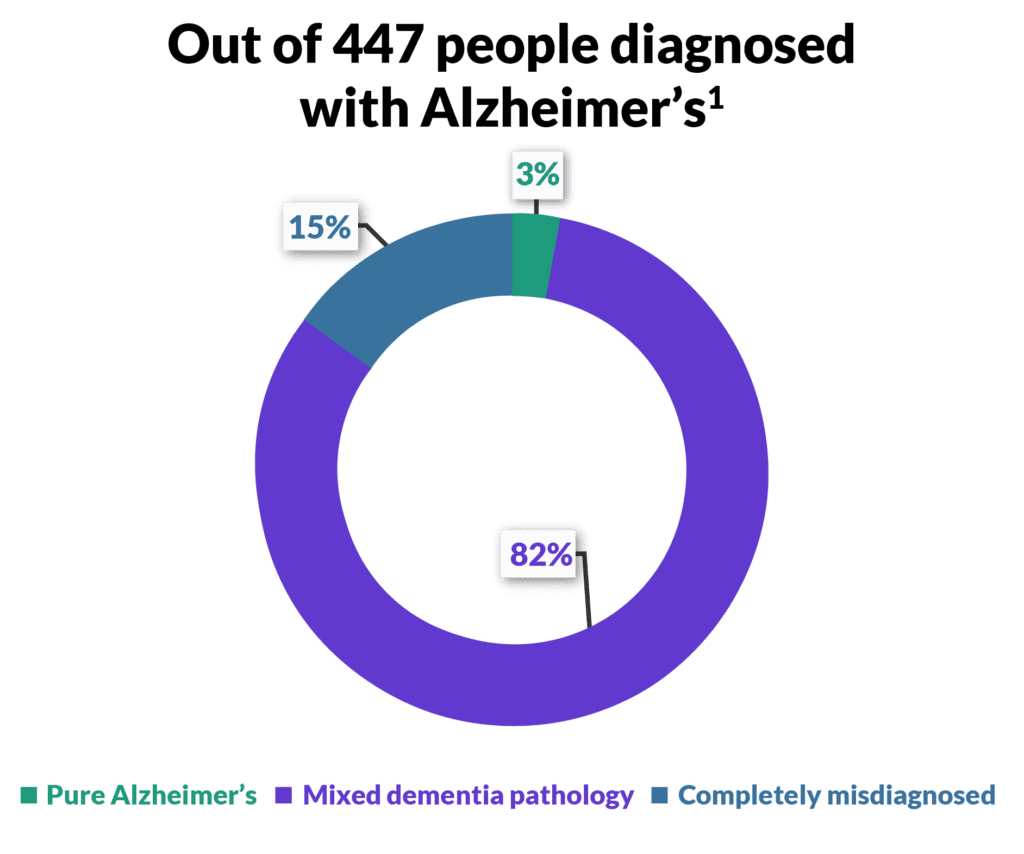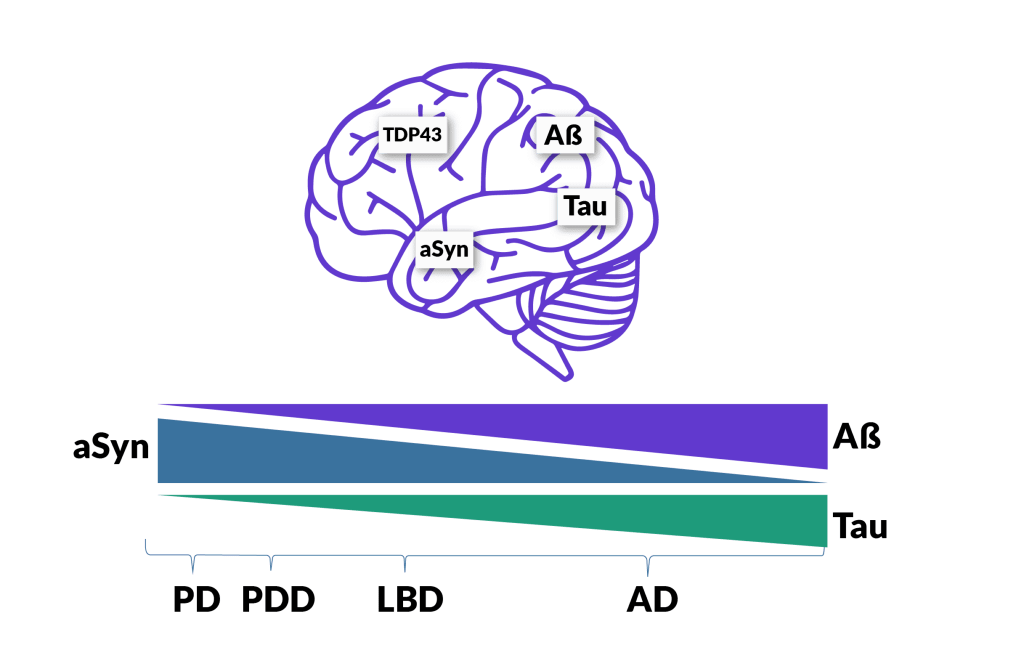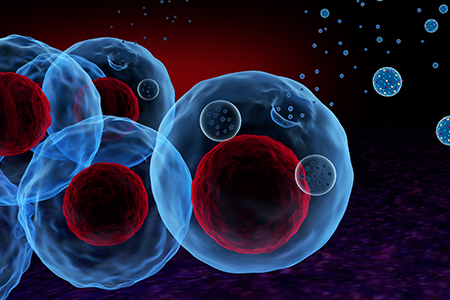
Neurodegenerative Diseases Overview

Neurodegenerative diseases are a family of diseases induced by the loss of neuronal function. Unfortunately, these diseases are relatively common in the older population, with more than 70 million patients worldwide. The most common symptoms of neurodegenerative diseases are dementia, motor dysfunction, and different psychiatric symptoms, including hallucination, agitation, depression, and behavioral changes. These diseases lead to enormous economic costs (over $200B in the US alone) and devastating emotional costs for caregivers.
The Cause of the most common neurodegenerative diseases are not completely known yet, but protein misfolding is a clear hallmark. Alzheimer’s disease is the most common neurodegenerative disease, affecting approximately 12% of the U.S. population age 65 and older.

Alzheimer’s disease
This disease is characterized by the accumulation of the misfolded protein amyloid beta (Aβ) in plaques and tau in Neurofibrillary tangles. Recently a treatment that reduced Aβ was approved as the first disease-modifying treatment. Parkinson’s disease is the second most common neurodegenerative disease, with over 10M patients worldwide. These diseases is characterized by the accumulation of the misfolded protein alpha-synuclein (αSyn).
Parkinson’s disease
People with Parkinson’s disease mostly suffer from motor symptoms like tremors and freezing of movement, but in many cases, they also develop dementia and psychiatric symptoms. αSyn also accumulates in Lewy body dementia, a disease with similar symptoms to Alzheimer’s, but instead of Aβ and Tau, is characterized by Lewy bodies (misfolded αSyn aggregation).
ALS
TDP43 mislocalization and aggregation can also lead to dementia in recently discovered disease called LATE (limbic-predominant age-related TDP-43 encephalopathy). TDP43 mislocalization is also a hallmark of amyotrophic lateral sclerosis (ALS), a motor neuron neurodegenerative disease that leads to paralysis and death.

With the increased acceptance of precision medicine, we now understand that in most cases, neurovegetative are continuous and separate diseases. Post-mortem analysis reveals that less than 4% have pure Alzheimer’s disease, while most suffer from mixed pathology with an accumulation of more than one misfolded protein.
NeuroDex aims to develop a blood test that measures various potential contributors and provides the full picture of pathological combinations in individual patient neurological disease. This will significantly contribute to the identification of new treatments and increase the success of matching the right cure and medication plan.





Pingback: ALS Treatments & Emerging Research in 2025